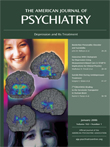Adverse Events, Stress, and Litigation: A Physician’s Guide
The suicide of a patient is one of the worst adverse events in psychiatry and a tragedy for all whom it touches. Robert Simon opened his recent book on suicide risk assessment and management by acknowledging the painful truth: “There are only two kinds of clinical psychiatrists: those who have had patients commit suicide and those who will” (1, p. 1). Psychiatrists of patients who commit suicide are inevitably deeply affected by this irrevocable act. Thus, although it is not intended solely for a psychiatric audience, psychiatrists are well advised to read Adverse Events, Stress, and Litigation: A Physician’s Guide.
Past decades have seen a dramatic increase in professional negligence or malpractice litigation following adverse outcomes. This litigation brings its own kind of pain and distress to plaintiffs and defendants alike. As the eminent jurist Learned Hand observed, “As a litigant, I should dread a lawsuit beyond almost anything short of sickness and death” (2). For defendant physicians, however, such litigation can be more than just painful; it can be personally and professionally devastating.
This excellent book by Charles and Frisch offers physicians who find themselves thrown into the frightening world of malpractice litigation more than a guide: it offers them a light in the darkness. It describes all aspects of the experience of becoming a defendant from personal, psychiatric, and legal perspectives, starting with physicians’ reactions to the adverse event that precipitates the litigation to getting on with life after the litigation. In addition, the authors provide suggestions and recommendations at the end of each chapter to help physicians wisely and effectively address their emotional, professional, and legal needs. These unique insights and helpful suggestions will assist physicians experiencing the distress of an adverse event and subsequent malpractice litigation.
Dr. Charles, Professor of Psychiatry Emerita at the University of Illinois College of Medicine in Chicago, knows of what she writes. In her first book, Defendant: A Psychiatrist on Trial for Medical Malpractice(3), Dr. Charles and her coauthor Dr. Eugene Kennedy provided an unprecedented account of Dr. Charles’s malpractice trial after the attempted suicide of a patient. By sharing her own experiences, Dr. Charles demonstrated to psychiatrists that they were not alone in the feelings and experiences related to an adverse event and unwilling involvement with the legal system.
The current book, co-written by Dr. Charles and Paul Frisch, General Counsel to the Oregon Medical Association, builds elegantly on the earlier book. Adverse Events, Stress, and Litigation is divided neatly into chapters that parallel the chronological sequence of events in litigation. Case examples are used expertly to highlight issues under discussion. Each chapter provides recommendations to physicians to manage or cope with the issues reviewed in those chapters.
The first chapters review the definition of adverse events from many perspectives, the emotional and psychological reactions of physicians, the period of anticipating the lawsuit, and then the litigation itself. Each stage of the subsequent litigation is expertly explained in subsequent chapters, including the process of the complaint, the reactions to being sued, retention of attorneys, coping with the stress of litigation, and the complex processes of discovery, settlement negotiations, and trial. For physicians unfamiliar with the law, these sections are invaluable. The book concludes with an overview of the medical, legal, insurance, and practice consequences of malpractice litigation. The authors then offer recommendations to physicians to help them move forward after the case ends.
The book’s only flaw is the analysis of the stress caused by adverse events within a posttraumatic stress disorder (PTSD) model. The authors state that physicians may experience a variety of emotional reactions, from not developing any serious symptoms despite their distress to developing a wide range of psychiatric disorders. However, the authors’ explicit definition of an adverse event as a traumatic life event as defined by DSM-IV leaves the impression that PTSD is a natural outcome of experiences of adverse events in medical practice. Adverse events are without doubt distressing and stressful, but not all distressing and stressful events are traumatic stressors. Although the use of a PTSD model reflects the extreme degree of distress subjectively experienced by those sued for malpractice, it does a disservice by expanding the categories of traumatic stressors without a scientific basis. Forensic psychiatrists in particular are all too aware of the tendency to label any type of distress following an adverse event as PTSD, a tendency that facilitates the increasing incidence of all types of litigation.
Overall, however, this book is exceptional. It is objective, informative, well organized, and well written. It covers ground not addressed anywhere else by educating physicians about one of the most anxiety-producing professional situations we can encounter. Whether we have already been sued, or whether we will be in the future, Adverse Events, Stress, and Litigation is well worth reading.
Reprints are not available; however, Book Forum reviews can be downloaded at http://ajp.psychiatryonline.org.
1. Simon RI: Assessing and Managing Suicide Risk: Guidelines for Clinically Based Risk Management. Washington, DC, American Psychiatric Publishing, 2004Google Scholar
2. Hand L: Deficiencies of trial to reach the heart of the matter: three lectures on legal topics. Association of the Bar of the City of New York 1926; 89:105Google Scholar
3. Charles SC, Kennedy E: Defendant: A Psychiatrist on Trial for Medical Malpractice. New York, Free Press, 1985Google Scholar



